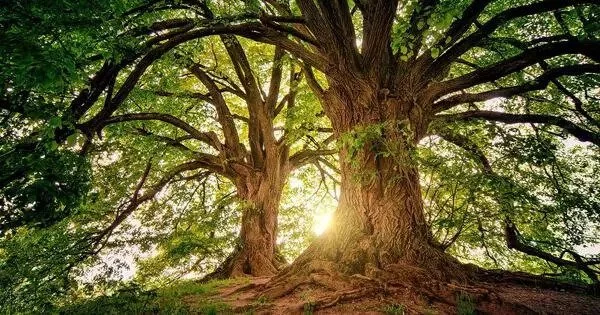Even minor climate change and associated precipitation shifts have the potential to dramatically alter Earth’s northernmost forests, which comprise one of the planet’s largest nearly intact forested ecosystems and are home to a significant portion of the planet’s terrestrial carbon.
This is the main finding of a five-year study led by a University of Michigan ecologist that used infrared lamps and soil heating cables to study the projected impacts of near-term climate change on thousands of seedlings from nine tree species found in far northern forests known as boreal forests.
Conifers such as spruce, fir, and pine dominate North America’s boreal forests. They are mostly found in Canada and Alaska, but they can also be found in parts of northeastern Minnesota, a small portion of Michigan’s Upper Peninsula, and northern Maine. The boreal forests are bounded to the north by tundra and to the south by temperate forest.
Young trees were warmed in the open air without the use of greenhouses or growth chambers at two University of Minnesota forest sites in northeastern Minnesota from early spring to late fall. Two levels of potential 21st-century climate warming were used: roughly 1.6 degrees Celsius (about 2.9 degrees Fahrenheit) and roughly 3.1 degrees Celsius (about 5.6 degrees Fahrenheit) above ambient temperatures.
Our findings have implications for the health and diversity of future regional forests. With even modest climate warming, the present-day southern boreal forest may reach a tipping point, resulting in a major compositional shift with potentially adverse effects on the health and diversity of regional forests.
Peter Reich
Furthermore, before some storms, movable tarps were placed above half of the plots to capture rainwater and simulate precipitation shifts due to climate change. Some of the trees were grown at ambient temperatures and moisture levels as a control.
The study discovered that even minor (1.6 C) climate warming caused significant problems for many species, including decreased growth and increased mortality. Furthermore, decreased rainfall exacerbated the negative effects of warming on the survival of several boreal species.
“Our findings have implications for the health and diversity of future regional forests,” said U-M forest ecologist Peter Reich, lead author of the study, which will be published in the journal Nature.
“With even modest climate warming, the present-day southern boreal forest may reach a tipping point, resulting in a major compositional shift with potentially adverse effects on the health and diversity of regional forests,” said Reich, director of the Institute for Global Change Biology at the University of Michigan’s School for Environment and Sustainability.
“These effects could reduce our forests’ ability to produce timber, host other plants, microbial, and animal diversity, mitigate flooding, and, perhaps most importantly, scrub carbon out of the air and store it in wood and soil.”

According to scientists, mid- to high-latitude plants are likely to experience both positive and negative effects from 21st-century climate change. When moisture is plentiful, a longer growing season may boost tree growth in some areas, particularly the far north.
Warmer and drier conditions in other areas may reduce tree growth and survival. Observational studies show that both positive and negative trends in boreal forest survival and growth are already occurring. However, direct experimental tests of the effects of climate warming on boreal forests across a range of soil moisture conditions are rare and have generally been limited in size, scope, and duration, according to the authors of the new study.
Many of these knowledge gaps are addressed in the Nature report. The researchers used temperature and rainfall manipulation to investigate the likely effects of near-term climate change on juvenile tree mortality and growth at two field sites.
“In the experiment, we expose forest plots to temperatures that we won’t see for another 40, 50, or 60 years in order to understand what those upcoming temperatures will do,” Reich explained.
The researchers discovered that warming, alone or in combination with reduced rainfall, increased juvenile mortality in all nine tree species and severely reduced growth in several northern conifer species found in boreal forests, including balsam fir, white spruce, and white pine.
At the same time, modest warming enhanced the growth of some broadleaved hardwoods, including some oaks and maples, which are scarce in the boreal forest but much more common in temperate forests to the south.
The new study, however, concludes that hardwoods are likely to be too scarce in the southern boreal forest to quickly fill the void left by vanishing conifers. As a result, near-term projected climate change will most likely transform today’s boreal forest into “a new state” of altered composition.
“At best, that new state will be a more impoverished version of our current forest,” Reich said. “At worst, it could include a high concentration of invasive woody shrubs, which are already common along the temperate-boreal border and are rapidly spreading north.”
The experiment was conducted at two University of Minnesota field stations. Reich, who joined the U-M faculty in 2021, maintains a joint affiliation at Minnesota and continues to collaborate on the forest-warming project.
More than 4,500 seedlings of nine native tree species (five broadleaf and four needleleaf species) were planted into existing herb, shrub, and fern vegetation at the study sites for the experiment. Balsam fir, white spruce, jack pine, white pine, red maple, sugar maple, paper birch, bur oak, and red oak are the nine tree species.
Over the course of the growing season, the movable tarps resulted in approximately 30% less rainfall total at randomly selected plots. Because rainfall was higher than average during the experiment’s five years, the low rainfall treatment represented average dry years over the past century, while the control treatments represented typically wet years over the same period. As a result, the low rainfall treatments were not extreme.





